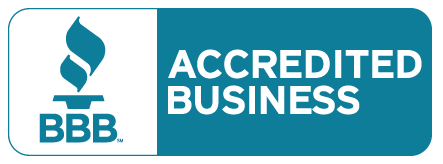Get a Great Quote and Fast Turnaround on Shot Peening
Shot Peening Services from Halo Metal Prep
The shot peening process is the most economical and effective process for producing surface residual compressive stresses to increase the product life of metal. Surface compression stress strengthens the metal, ensuring that the part will resist fatigue failures, corrosion fatigue and cracking, and galling from cavitation. When you need durable shot-peened metal parts, trust Halo Metal Prep for the highest quality shot peening services.
It’s important not to confuse shot peening with shot blasting. Shot peening propels spherical media to enhance the properties of a metal component. Shot blasting propels steel beads or other blasting media to clean a metal’s surface. Shot peening improves a metal’s lifespan while shot blasting is a process to clean/descale metal components.
The benefits of shot peening services are clear, they extend the life of metal parts and prevent crack formations, which in turn helps to prevent catastrophic failure of components. Halo Metal Prep is proud to provide high-quality shot peening services and exceptional customer service to the Cleveland Ohio area. Our skilled employees are here to solve your most challenging metal finishing needs with fast turnaround times. With over 35 years of industry expertise, Halo Metal Prep is proud to offer state-of-the-art shot peening services for a competitive price.
Note: Shot peening is not applied in order to compensate for deficiencies in other steps of the manufacturing process.
Shot peening may increase the component’s life by 500-1000%.
Shot Peen Control Parameters
Standard operating guidelines have to be met when shot peening. Otherwise, you are just simply shot blasting. The correct choice of the peening equipment, media, and process parameters are crucial to meeting the specified callout. At Halo Metal Prep, our team is highly skilled and able to recognize the factors that may affect the shot peening process.
Factors that affect the process are:
Shot Peening Increases Resistance to:
Shot Peening Helps With:
Components which are normally shot peened include springs, wheels, turbine parts (blades, shafts), propellers, aircraft wings and landing gear, valves, gears, crankshafts, connecting rods, pistons, cylinder heads, and bolts.
Specs and Coverage
Shot peen, per SAE J2441, refers to the specification administered by the Society of Automotive Engineers (SAE) titled, “Surface Vehicle Standard.” Shot peening is described as required peening media, equipment, preparation, procedure, quality assurance provisions, and other requirements. Inspection for 100% coverage in accordance with SAE J2277 refers to the specification administered by the SAE, titled “Surface Vehicle Recommended Practice: Shot Peening Coverage.” This specification describes the procedure for coverage determination and inspection methods. We also operate under the AMS specifications; AMS 2430 Spec and the AMS 2000 Series
Peen Scan
A method to determine shot peen coverage with a fluorescent tracer fluid, whereby the part to be peened is coated with the fluorescent dye, which under ultraviolet light glows yellow. After peening, if there is no trace of the coating, the coverage has exceeded 100%. This procedure is used to determine length of cycle time.
Lot Control
Per customer-initiated lot numbers. Certifications will reflect individual lots.
Almen Strip Testing
The shot peening process is widely used to induce compressive residual stresses in fatigue critical surfaces, and its intensity is calculated by placing Almen strips near the intended target and measuring their post-peening curvature or arch height.
The Almen strip is a small hardened and tempered steel test strip, which curves on the exposed side when submitted to the intensity of the blast stream. This amount of upward deflection is then measured by an Almen Gage and its value is used to determine if proper intensity has been achieved. This process may have to be repeated several times. Once the proper arch height is reached, the parameters are recorded and can be used again for future production.
Profilometer
In such cases when customers call out specific surface finish requirements and/or maximum ra values, a profilometer is used to verify the surface roughness after peening or blasting treatments.
Shot Peening Services | What is Shot Peening?
Shot peening is a cold working process used to finish metallic parts and improve the fatigue life and stress corrosion resistance of the metal. The shot peening process creates beneficial residual surface stresses that inhibit and/or delay crack initiation and propagation. Compressive stresses are induced into the exposed surface layers of metallic parts by impingement to improve the overall fatigue life.
Shot peening is one of the most common metal finishing treatments. A spherical media is propelled by air or a centrifugal wheel and is directed at a metal surface at high velocity and controlled parameters. The spherical shot acts like a peen hammer, dimpling the surface of the shot-peened metal and causing compression stresses or risers under the dimples.
The shot peening process has been a standard mitigating solution for post-machining and heat treatment of high fatigue components. Common peening media are cast steel shot, conditioned cut wire, and ceramic or glass beads. Contact us today to learn more about our premium shot peening services.


